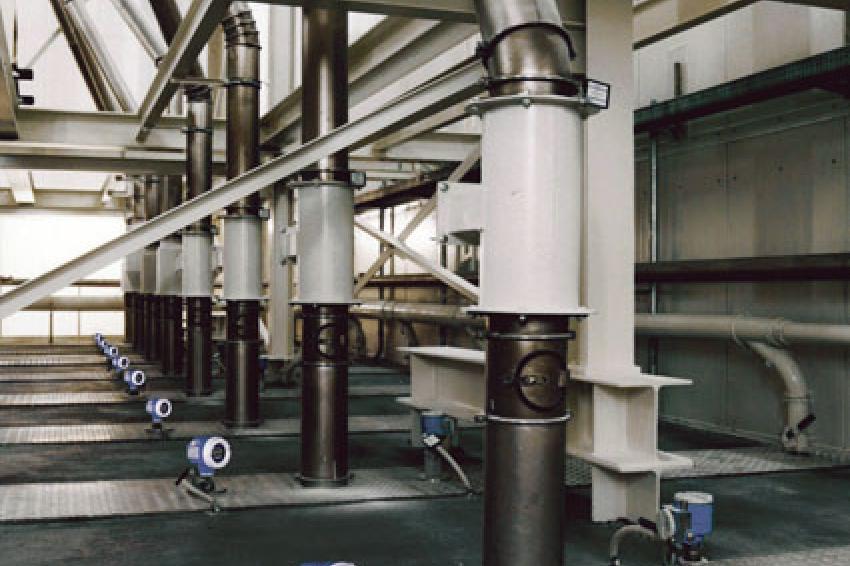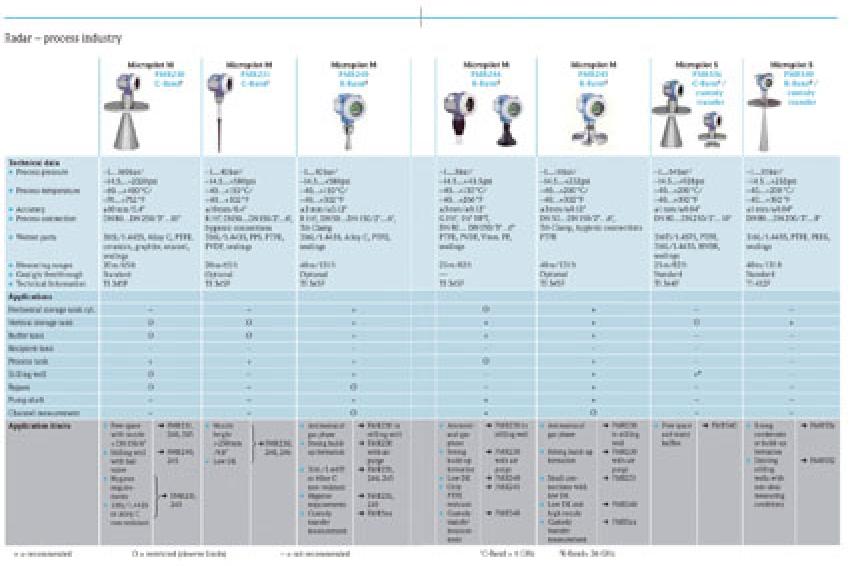One Suitable Measuring Principle for Every Level Measuring Task
Lock And Key
It is understandable that both plant planning and operating staff would like to have one single method as this would indeed reduce the training requirements and commissioning errors as well as lead to cost savings (e.g. for replacement devices). However, every measuring principle has its strengths and weaknesses.
If a level measuring device is to provide a safe and reliable measured value in all operating conditions, when selecting the device, the medium properties, possible process effects during the entire operating time and the installation site must be taken into account in addition to the temperature and pressure resistance. An experienced manufacturer such as Endress+Hauser, who can offer the correct measuring system adapted to the task at hand, can be relied upon as a competent adviser. The examples described below illustrate the requirements of plant planning staff.
Microwaves Tick All The Boxes
The use of high-frequency radar measuring devices offers various advantages over ultrasonic waves in level measurement. Free-space radar devices such as the Micropilot M are thus suitable for high temperatures up to 400°C and operate in a vacuum or at pressures up to 160 bar. The Levelflex M guided radar can also be used up to 400°C and 400 bar. Vapor or various gas compositions present in boiling process containers have virtually no impact on the propagation speed of the microwaves up to 200°C and 50 bar at the same time.
The physical properties of the transmitted microwave are another advantage of radar measuring technology. The microwave can even radiate through a number of plastic and glass types. The levels in various plastic or glass containers can thus be measured from the outside without mounting a nozzle.
Reliable In Tough Conditions
The Levelflex M guided radar measuring device is the ideal solution where various application conditions are expected to cause intensive foam generation. This technology is virtually unaffected by foam generation due to its operating frequency of approx. 1 GHz and the fact that the microwave pulses are guided along a rope or rod. If conditions are made even more difficult due to mechanical factors, e.g. in a fast-rotating, multistage agitator container with strong turbulence and intense foam generation at the same time, the solution to level measurement is, as always, pressure or differential pressure measurement. More complex measuring tasks, such interface detection, also require various methods to ensure a reliable measurement that is adapted to the process.
Up to three measuring values can be output if the Levelflex M guided radar is used (interface, layer thickness and overall level).
Only the interface can be determined using capacitance probes. The advantage of these devices is their use for interfaces where emulsification occurs. The reflection signal of a guided radar device is reduced by the emulsion. In this instance, capacitance probes continuously determine an average value from the emulsion that forms. The measuring values can be reliably captured using a gamma measurement if the procedure is made even more challenging due to the formation of multilayer phases.
The Perfect Solution for Bulk Solids
In the area of bulk solids, e.g. in the case of free-flowing products such as sugar or quartz sand, cones or funnels can form on the surface of the product when the container is being filled or emptied. They can form either on the entire surface or locally and have the same effect as reflective surfaces so that measuring by means of a diffuse reflection of the transmitted pulses is not physically possible. There is no difference between ultrasonic and free-space radar measuring devices where conditions such as this occur. Guided radar, such as the Levelflex M, has the advantage that it offers a virtually punctate measurement. It is the only proper solution as reflective surfaces or cones and funnels that form during filling and discharge have virtually no impact on the reflection signal.
Light, powdery bulk solids such as Aerosil products, polystyrene or wood dust can have very low dielectric constant and density values when the moisture content is low. Radar or ultrasonic devices cannot guarantee reliable measurement in this case. A safe and reliable measurement result can only be guaranteed using a mechanical level system. The mechanical components have mostly been replaced with electronic in the new Silopilot M, which includes state-of-the-art frequency converter control, using a single-phase supply voltage, and a three-phase traction engine. There is no "sound beam" as is the case with ultrasonic technology or an emitting angle as with radar methods. Cross beams do not impact the level system. In addition to the advantages mentioned, this method also provides assurance to the operator from the point of view of managing process influences that may not be anticipated at the planning phase.
In extreme cases, applications with intense dust buildup during pneumatic filling of high silos with powdery media, e.g. cement or flour, can result in complete damping of the reflection signal when using ultrasonic measuring devices. With a small number of exceptions, radar level measuring devices are not affected by conditions of this type. They penetrate the dust and are reliable even during filling.
Robust measuring technology is required, for example, in applications for quarrying work in the processing of hard stone. The movement of the ultrasonic sensor membrane produces a self-cleaning effect, which means that regular cleaning of the sensor is unnecessary and maintenance work avoided. The ultrasonic measurement is available in a separate version at the same time. In this version, the sensor can be positioned at a distance of up to 300m from the relevant switching unit. This is particularly advantageous in tough application conditions such as stone crushers with strong vibrations. The list of examples of application-specific requirements of measuring technology could go on endlessly. If the choice of level measuring device is based purely on the aim to use a "modern" measuring method, the user may lose the benefits a traditional solution would offer and possibly even at a lower price; e.g. capacitive measuring technology, ultrasonic or pressure measurement or a mechanical level system.
Product Selector Based On 55 Years of Expertise
Take advantage of the decades of experience Endress+Hauser offers you in selecting the correct level measuring device for your specific measuring task. Enjoy the benefits the company provides as a full-range supplier of all standard measuring methods: the time and cost savings guaranteed by a reliable measurement.
The product selector supports the user in planning the various procedures for continuous level measurement in the area of liquids and bulk solids.
The contents include an overview of the measuring principles with technical data, the resulting advantages and application limitations. Guided by your application, we recommend the preferred of the various measuring methods based on our experience. You are also provided with installation instructions for the various technologies.
The aim of this product selector for "Continuous level measurement in liquids and bulk solids - Selection and engineering guide for the process industry" is to divide into segments the best possible solution - in terms of price and task - that is tailored to the application in question.








